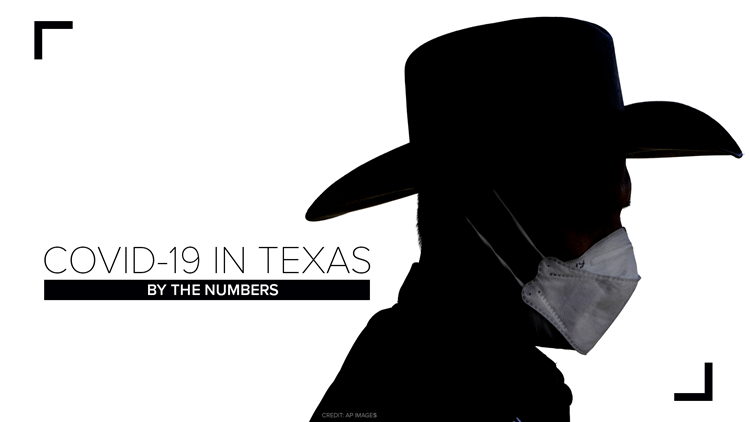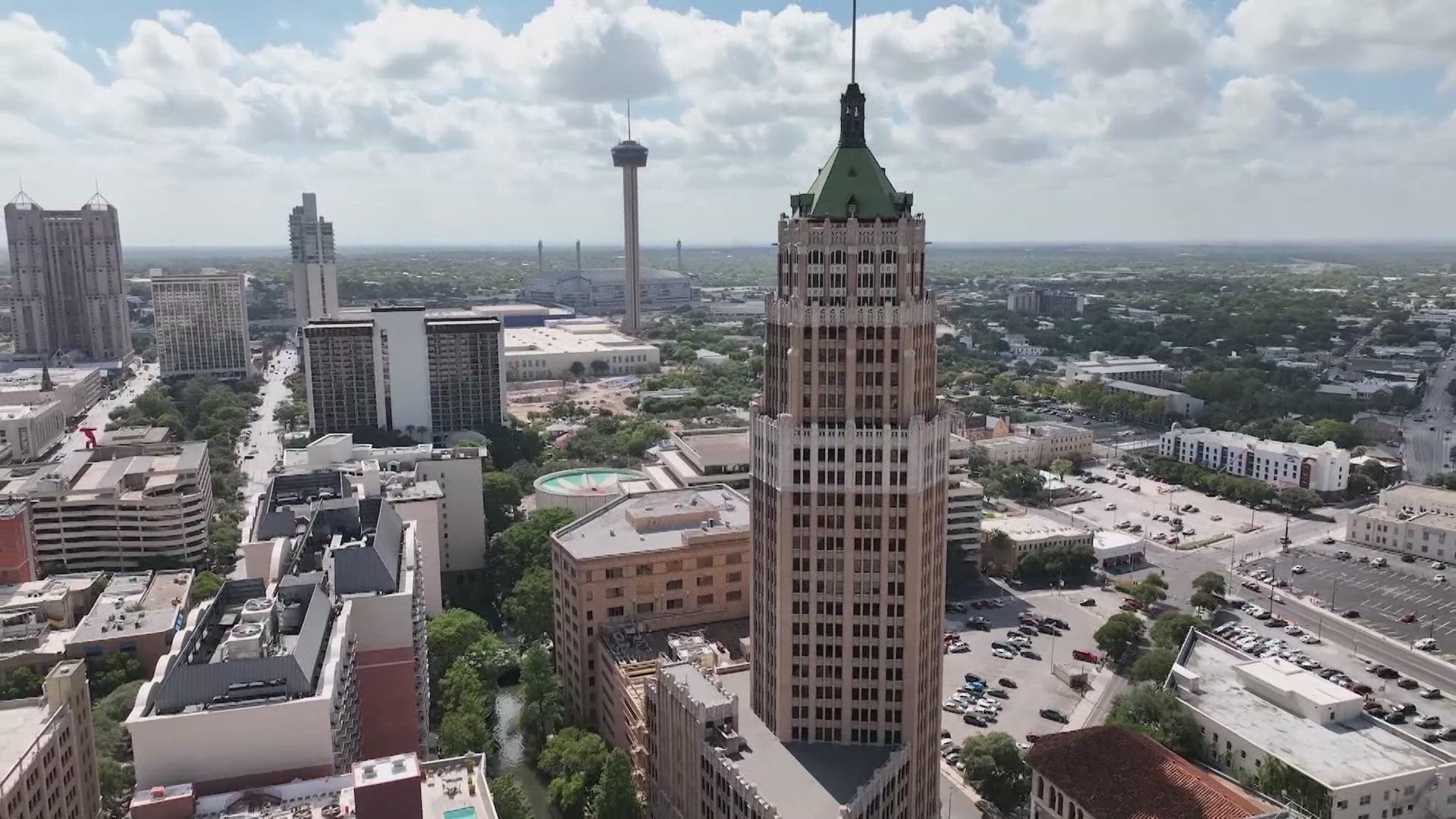A record number of COVID-19 deaths in Texas were reported on Wednesday, raising the death toll to around the size of the entire population of Waxahachie.
But as the numbers climb higher and higher while the pandemic persists, what they mean and the physical toll they represent can sometimes be lost on people.
"There really is a kind of phenomenon that some people call 'MEGO'— My Eyes Glaze Over— and if you have too much, just a blizzard of numbers out there, at some point, people just get immune to hearing the same thing over and over and over again," said Don Kettl.
He's a professor of public management and public policy at the University of Texas-Austin's LBJ School of Public Affairs.
So WFAA asked Kettl to better help people understand the magnitude of the coronavirus in the state of Texas, let alone the massive numbers that represent the disease's impact across the entire country.
"For so long, there's been this sense that it's not a thing; if it's a thing, it's a small thing; if it's a small thing, then it's a thing that won't affect me or my town," he explained. "Increasingly it's a thing that's sweeping across the state."
Kettl used data from different COVID-19 tracking projects to examine the virus' impact, including those from the University of Texas, the University of Washington and Johns Hopkins University.
Here are 5 sobering figures he came up with, using data from Jan. 26 and the morning of Jan. 27:
1. Over the past 30 days, one Texan has died from COVID-19 every 5.25 minutes, according to data from Johns Hopkins University.
About 11.4 people were dying every hour somewhere across the state in the last month, Kettl explained.
It was a number that surprised him.
"It really, really struck me," Kettl said. "I was stunned by that, because it really means that roughly somewhere between every 5 to 6 minutes someone across the state is dying of the virus."
The death rate has also been 38% higher in the past month, while hospitalizations have been 26% higher, Kettl added.
"My hope would be that people would look at that and say, 'Wow'," Kettl added. I'm hoping [these figures] are going to make things more real as a result of this."
2. The number of Texans who have been diagnosed with COVID-19 since the pandemic began is equal to the population of Houston
More than 2.3 million Texans have contracted the coronavirus and tested positive for it, according to Johns Hopkins University.
State data reflects a similar number when combining confirmed and probable cases.
Although Texas has some of the biggest cities in the country, none of its other city populations come close to the total of Texans who have tested positive, Kettl explained.
At 1.5 million people, San Antonio is the next largest city, so about 800,000 less people than the state population of those who've had COVID-19.
The 2.3 million figure is also about 1.7 times the population of Dallas, which sits at about 1.3 million people.
Fort Worth has a population around 875,000 people, while Austin is about 950,000 people.
"This is a disease that has been incredibly widespread," Kettl said, explaining how this figure alone had perhaps surprised him the most. "I knew that it had spread widely. I was surprised it spread that widely."
3. 14 cases are being diagnosed every minute in Texas
Over the past 30 days, 14 people somewhere across the state were testing positive for COVID-19 every single minute, Kettl said. That was as of Jan. 26.
As the new, more contagious variants of the disease make their way through Texas, that figure could still increase, even as vaccinations take place.
"These projections that we are talking about really don't take into account the prospect that the next round of the mutation may make the virus spread more quickly and be more deadly," Kettl said. "So if it turns out that people don't engage in the safe behaviors, if these new mutations start to spread, the implications could be even significantly worse. It's going to be hard to vaccinate people fast enough to be able to keep up."
4. The equivalent of the entire population of Port Neches is currently hospitalized
More than 12,850 people were hospitalized with the coronavirus as of Jan. 26, data shows. That's about the same number of people as Port Neches, which has a population of a little less than 13,000 people.
Or another way to think of it? One out of every hundred people of Dallas' 1.3 million population is currently hospitalized, Kettl said.
The figures are still high for those in intensive care units as well. Picture the entire population of Winnsboro being in the ICU— that's what the numbers looked like on Jan. 26.
5. Up to 14,000 more Texans will likely die before May 1.
That's equal to the entire population of Kilgore dying between now and May 1, Kettl explained.
Kettl used a projection from the University of Washington to find this figure. The projection takes into account current behavior trends and the vaccination process, but the new variants could change that ultimate number.
"It's a dynamic model," he explained. "They modify it pretty much everyday."
_______
According to data from Johns Hopkins University, Texas has seen record high levels of new cases, deaths, test results and positivity rates in the past month.
"The basic lesson that comes from this is it's hit Texas hard, it's continuing to hit Texas hard," Kettl explained. "We're hoping that we've at least flattened the curve, if it's not going up anymore, but even at it's current level it's going to continue to be dangerous, and, unfortunately, even fatal for months to come."
That's why people need to continue to take whatever measures they can to stop the spread of the disease, like practicing social distancing, wearing masks and frequently washing their hands, he added.
But for good measure, here are a few extra figures that can end this story on a hopeful note.
One in 13 Texans has received their first dose of the vaccine so far, WFAA's David Goins reports. And that figure is 1 in 6 when looking at Texans 65 years and older.
That data came from the Texas Department of State Health Services during a Thursday webinar.
In all, about 1.7 million people have received their first vaccine doses and 370,000 have been fully vaccinated.



